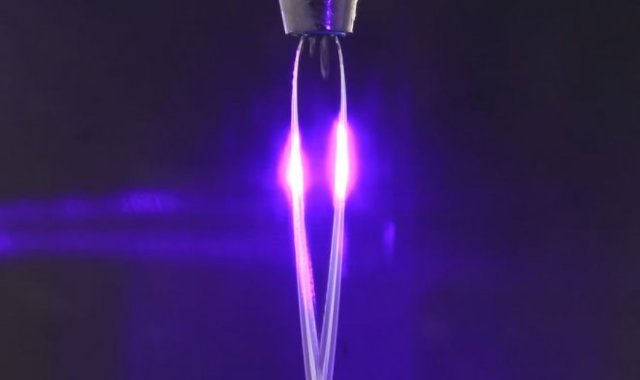
Water jetResearchers from the Ruhr University in Bochum (Germany) have developed a new semiconductor circuit, the basis of which is...
ordinary water. The most interesting thing is that water does not cease to be a conductor, as we used to think, but its conductivity can now be controlled. Moreover, at huge speeds – no existing semiconductors made of other materials can compare with the novelty.
Initially, iodine is added to pure water, which significantly reduces its conductivity. Water is passed through a special nozzle to get a flat jet of liquid several microns thick. A laser is fired into this jet, which knocks out iodine ions, which leads to a sharp increase in the conductivity of water. The second laser "reads" this change and determines which of the two positions the system is in. This simulates the operation of a classical semiconductor. The advantage of this technology is that the speed of the lasers allows you to change the state of the water in just picoseconds. A typical microprocessor circuit modeled on such semiconductors, in theory, is capable of operating with a frequency in the terahertz range — thousands of times faster than modern gigahertz processors. Alas, so far this is only an experimental development, a concept, but the idea of a water-laser semiconductor intrigues scientists and engineers.
Alexander Martynenko

